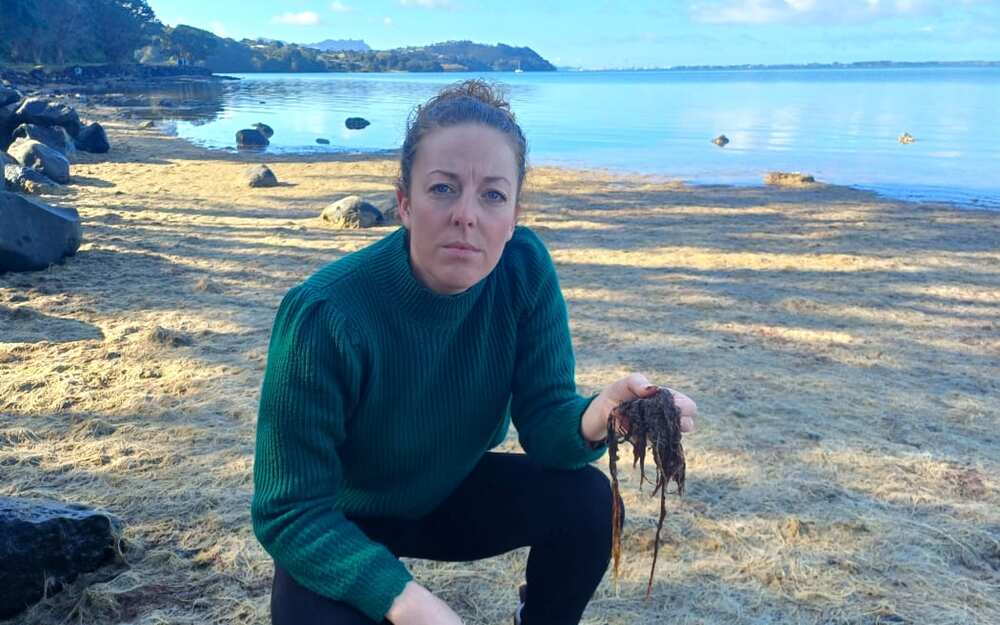Another potentially invasive seaweed discovered in Northland
RNZ
13 September 2024, 6:01 PM
 The red seaweed Asparagopsis taxiformis is new to mainland New Zealand. Photo: Supplied / NRC
The red seaweed Asparagopsis taxiformis is new to mainland New Zealand. Photo: Supplied / NRCA potentially invasive red seaweed not previously seen in mainland New Zealand has been discovered in Northland and the Hauraki Gulf.
While the weed, called Asparagopsis taxiformis, has displaced native species and reduced biodiversity in other parts of the world, it's of interest to science for its ability to counter methane emissions from livestock.
Northland regional councillor Jack Craw said the seaweed was first spotted at Tamaterau, in Whangārei Harbour, by ecologist and fellow councillor Amy Macdonald.
It had also been found at Iris Shoal, off Kawau Island, by NIWA staff looking for caulerpa, a highly invasive exotic seaweed.
Since then large amounts had washed up at Tamaterau.
Craw - who chairs the Biosecurity and Biodiversity Working Party - said the seaweed was native to the Rangitāhua/Kermadec Islands and similar to mainland New Zealand's red seaweed Asparagopsis armata.
Officials suspected it had been at both the Whangārei Harbour and Kawau Island locations for some time, most likely finding its way there on a biofouled hull or hitching a ride on an anchor or other equipment.
"We don't know how this weed will react in the mainland New Zealand marine environment, and at this stage there is no evidence to suggest that the seaweed is affecting biodiversity in these areas. However, internationally it has been shown to outcompete and displace native species, impacting biodiversity," Craw said.

Northland Regional Councillor Amy Macdonald with the red seaweed she discovered at Whangārei Harbour. Photo: Supplied / NRC
Biosecurity New Zealand would make any decisions regarding control, if any, and was currently completing a risk assessment.
In the meantime, Craw urged vessel owners to be extra vigilant and ensure hulls were clean before moving.
"It's also important to make sure that anchors and all top side gear are also clean, free of fouling and, if possible, dry before moving."
He said red seaweeds had been researched by scientists in New Zealand and overseas for their ability to reduce methane emissions when used in feed for ruminants.
Anyone who spotted what they thought might be Asparagopsis taxiformis outside Whangārei Harbour could call the MPI hotline on 0800 80 99 66, or use the online report form.
This story was originally published by RNZ



